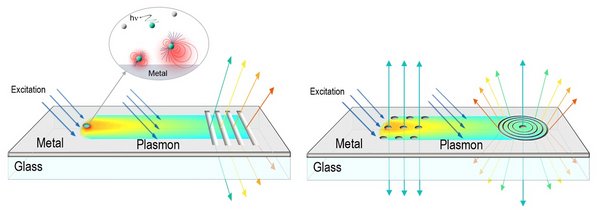CeNS Colloquium
Place: Kleiner Physik-Hörsaal, Geschwister-Scholl-Platz
Date: 13.11.09, Time: 15:30 h
Plasmon-Controlled Fluorescence: A New Paradigm in Fluorescence Spectroscopy
Prof. Joseph R. Lakowicz
University of Maryland
Fluorescence spectroscopy is widely used in physical, chemical and biological research. Until recently essentially all fluorescence experiments were performed in the far-field regime. By far-field we mean at least several wavelengths from the fluorophore. In recent years there has been a growing interest in the interactions of fluorophores with metallic surfaces or particles. Near-field interactions are those occurring within a wavelength distance of an excited fluorophore.
The spectral properties of fluorophores can dramatically be altered by near-field interactions with the electron clouds present in metals. These interactions modify the emission in ways not seen in classical fluorescence experiments. Fluorophores in the excited state can create plasmons that radiate into the far-field and that fluorophores in the ground state can interact with and be excited by surface plasmons. These reciprocal interactions suggest that the novel optical absorption and scattering properties of metallic nanostructures can be used to control the decay rates, location, and direction of fluorophore emission. We refer to these phenomena as plasmon-controlled fluorescence (PCF). An overview of the recent work on metal-fluorophore interactions will be presented. Recent research combining plasmonics and fluorescence suggest that PCF would lead in new classes of experimental procedures, novel probes, bioassays and devices. 1While there are many complexities to fluorophore-metal interactions there are also many opportunities. In addition to control of the chemical structure of the fluorophore we can now control, to some extent, the processes of excitation and emission with nearby metallic nanostructures resulting in new approaches to high-throughput biology, diagnostics and molecular imaging.


